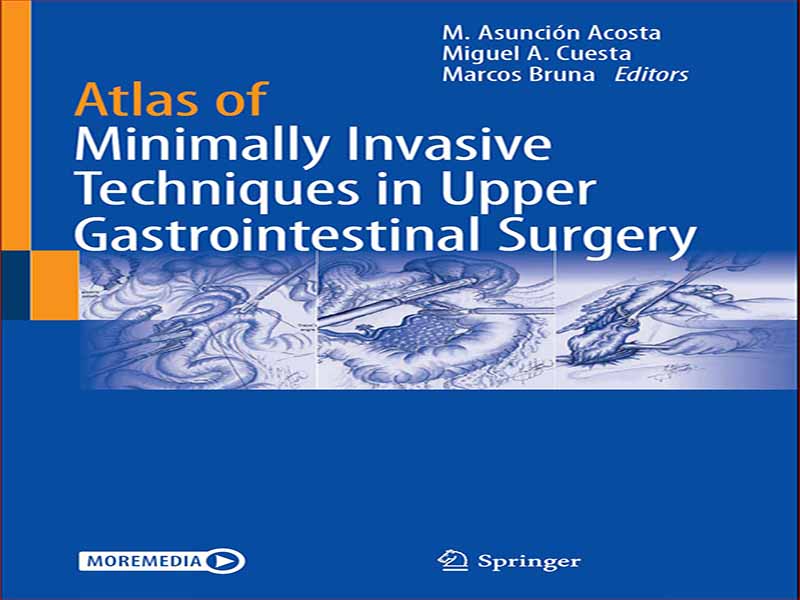از زمان اولین مداخلات جراحی ضد رفلاکس لاپاراسکوپی در اوایل سال 1990، توجه ما اجرای روشهای کم تهاجمی در تمام پاتولوژیهای خوشخیم و بدخیم دستگاه گوارش فوقانی (GI) بوده است. جراحان به طور مستمر در تلاش هستند تا بهترین مراقبت ممکن را برای بیماران خود ارائه دهند. این تمرکز بر افزایش کیفیت جراحی، آنها را به استفاده از روش جراحی حداقل تهاجمی (MIS) میآورد. با انجام این کار، آنها سعی در کاهش درد پس از عمل، کاهش خطر عوارض بعد از عمل و افزایش کیفیت زندگی دارند. جراحان در دهه های گذشته پیشرفت های عمده ای را در بهبود جراحی نشان داده اند. ما شاهد جایگزینی روشهای تهاجمی تشخیصی با انواع تکنیکهای تصویربرداری شدهایم که بینشی با وضوح بالا در جنبههای آناتومیکی بیماری ارائه میدهند و در نتیجه به تیمهای جراحی اجازه میدهند تا نشانهها و رویکردهای جراحی خود را اصلاح کنند. بر اساس این تصویربرداری بهتر، ما شاهد توسعه درمانهای آندوسکوپی در سرطانهای اولیه بودهایم، اما همچنین قرار دادن استنتها یا درنها با هدایت تصویر از راه پوست برای تسکین انسدادها یا جمعآوری مایعاتی که بهبودی بیماران را مختل میکنند، دیدهایم. و در نهایت، ما شاهد برشهای بزرگ شکمی و برداشتنهای گسترده با تلفات خونی زیاد بودهایم که با برشهای کم و کالبد شکافی ملایم با حداقل از دست دادن خون جایگزین شدهاند، بنابراین به بیماران این امکان را میدهند که خیلی زود پس از جراحی حرکت کنند و به جای ماندن طولانیمدت بعد از عمل در طی چند روز فعالیت خود را از سر بگیرند. بیمارستان علاوه بر این، مفاهیم مسیر سریع، ایده های محافظه کارانه درمان های بعد از عمل را شکسته است، و روند هر مداخله جراحی را به یک تکه عینی مبتنی بر شواهد تبدیل کرده است. از این رو جای تعجب نیست که جراحی کم تهاجمی در حال حاضر درمان جراحی استاندارد تقریباً در تمام زمینه های جراحی شکم است، مانند جراحی کیسه صفرا، کل جراحی خوش خیم دستگاه گوارش، از جمله جراحی چاقی، جراحی مری، معده و سرطان کولورکتال.
Since the first interventions of laparoscopic antireflux surgery in the early 1990 our interest has been the implementation of minimally invasive procedures in all Upper Gastrointestinal (Upper GI) pathology, benign and malignant. Surgeons continually strive to provide the best care possible for their patients. This focus on enhancing the quality of surgery brings them to employ the Minimally Invasive Surgery (MIS) approach. Doing so, they try to reduce postoperative pain, lower the risk of postoperative complications and increase quality of life. Surgeons have in the past decades demonstrated major progress in improving surgery. We have seen diagnostic invasive procedures replaced by a variety of imaging techniques providing high-resolution insight in the anatomical aspects of the disease, thereby allowing surgical teams to refine their surgical indications and approaches. Based on this better imaging we have seen the development of endoscopic treatments in early cancers, but also image-guided percutaneous placement of stents or drains for relieving obstructions or fluid collections that impede the recovery of patients. And finally, we have seen large abdominal incisions and extensive resections with huge blood losses replaced by minimal incisions and gentle dissection with minimal blood loss, thus allowing patients to ambulate very early after surgery and reassume their activities within days instead of long postoperative stays in the hospital. Moreover the fast track concepts have broken the conservative ideas of perioperative treatments, making the process of every surgical intervention a piece of objectiveness based on evidence. Hence it is no surprise that Minimally Invasive Surgery is currently the standard surgical treatment in almost all areas of Abdominal Surgery, such as gallbladder surgery, the whole benign gastrointestinal surgery, including bariatric surgery, esophageal, gastric and colorectal cancer surgery.
این کتاب را میتوانید بصورت رایگان از لینک زیر دانلود نمایید.
Download: Atlas of Minimally Invasive Techniques in Upper Gastrointestinal Surgery




































نظرات کاربران